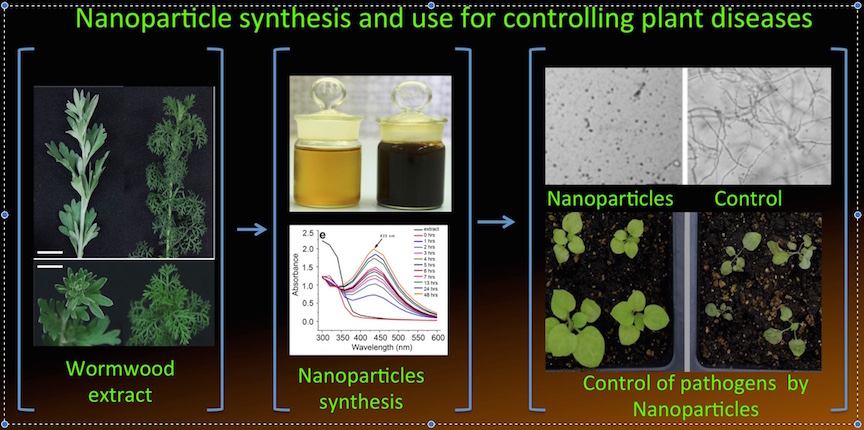|
Management of plant diseases using genetic engineering,
biological control and secondary metabolites.
Genetic engineering: Plants use two major immunity
systems to defend themselves against pathogens. In one system,
conserved pathogen-associated molecular patterns (PAMP) are
recognized by plants through “Pattern Recognition
Receptors” (PRRs) leading to the activation of defense
responses. Pathogens inactivate PAMP-triggered immunity by delivering
virulent disease causing effectors proteins into cells. Plants counteract by
recognizing these effectors through resistance (R) proteins, which
leads to a more rapid and robust defense system called
effector-triggered immunity.Â
Plant defenses include cell wall reinforcement, hypersensitive
response, and expression of many defense genes including pathogenesis
related (PR) genes. Â Introgression of
resistant genes from wild relatives using traditional breeding
methods is not efficient, especially in woody ornamentals, because of
difficulty in sexual hybridization and potential loss of desirable traits. In addition, the
gene-for-gene type R genes are in most cases rapidly
overcome by new virulent pathogen strains.Â
Current crop transformations for fungal resistance have been using
individual defense genes, which in most cases have resulted in
partial resistance. Durable
and broad-spectrum resistance can be accomplished with heterologously expressing multiple Pattern
Recognition Receptors (PRRs) along with other genes in one line.
 We are transforming several PRRs and other
defense-related genes in unison into several economically important
crops including tomatoes, Geranium and roses. Â Since, our
approach is expected to provide broad-spectrum resistance, wherever
feasible, transgenic lines will be tested against other pathogens
too.
Biological control: The occurrence of
fungicide-resistant pathogens and the potential adverse effects of
pesticides on the environment require using alternative low-risk
strategies such as biological control agents (BCA) for disease control. Currently, however, BCAs
are not used extensively in integrated disease management programs of
crops. BCAs are wide spread in
the environment and their deployment for controlling crop pathogens
and diseases will reduce exposure of growers and consumers to
chemicals and will mitigate fungicide-associated health and
environmental risks. Our goal is to conduct research on several commerciall and experimental BCAs against major
fungal pathogens.
Secondary Metabolites mining: Several medicinal
plants and microorganisms are rich sources of bioactive compounds.
Although these sources are primarily used for discovering human
medicines, they also hold promise for identifying antimicrobial
compounds that target plant pathogens. In collaboration with
scientists in China, our lab are screening
several traditional chinese medicinal
plants for secondary metabolites that display antimicrobial activity.
Ultimate goal of this project is to
diversify repertoire of chemistries for controlling plant diseases
and to mitigate the impact of appearance of fungicide-resistant
strains of plant pathogens on agriculture.
Synthesis and application of Nanoparaticles
for the control of plant diseases: In this project we explore various medicinal plants for
the production of nanoparticles. These nanoparticles are then
physically characterized using ultra violet-visible (UV-Vis)
spectroscopy, dynamic light scattering (DLS), transmission electron
microscopy and energy-dispersive X-ray(EDX) analysis. Synthesized nanoparicles are then evaluated for control of
plant pathogens in vitro and in planta.

|